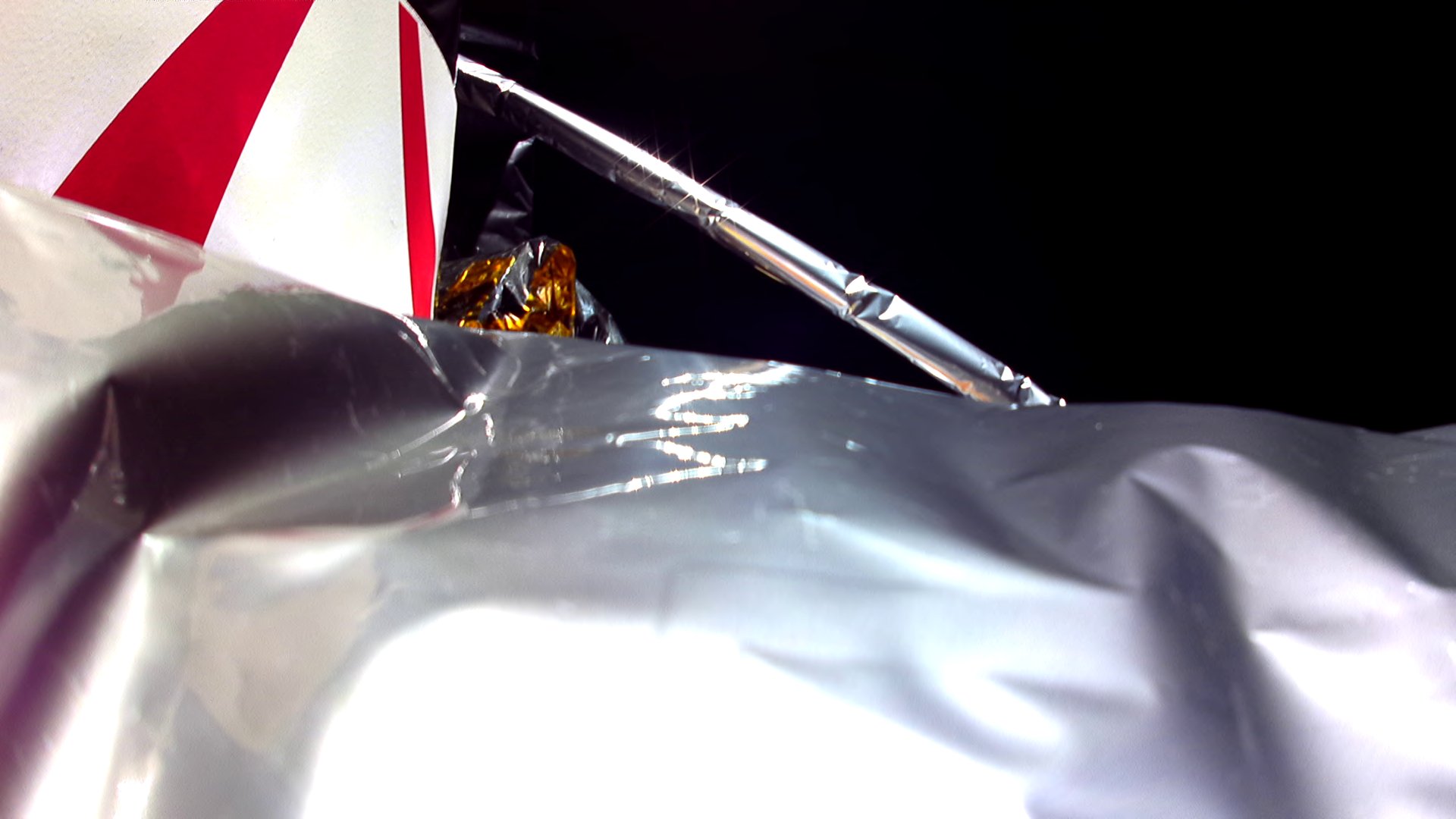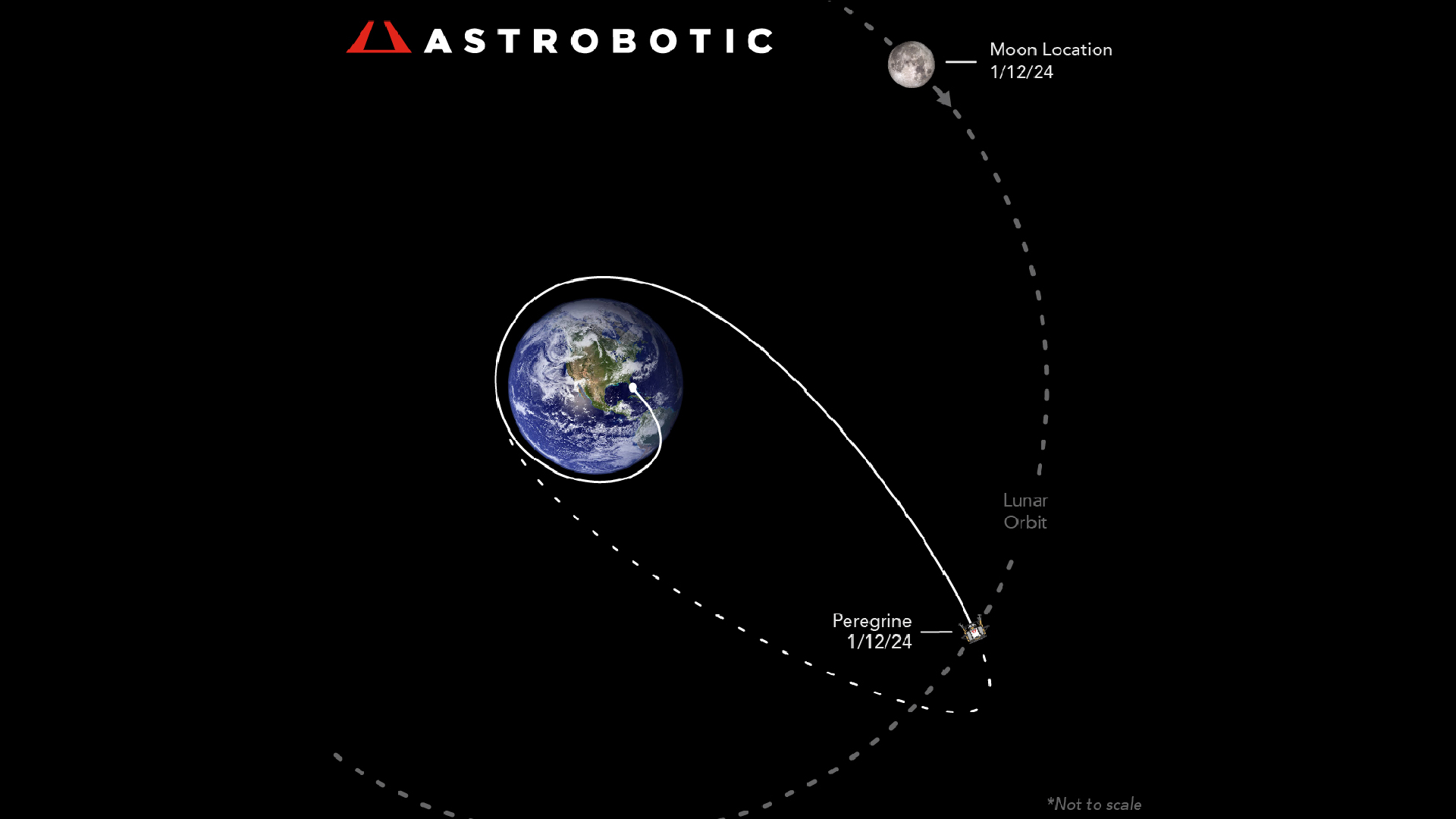
The private Peregrine moon lander is hardly leaking any more, but it's still on track to hit Earth, its builder said Monday (Jan. 15).
Peregrine was supposed to soft-land on the moon next month, according to its builder Astrobotic, but things didn't go to plan after its launch on top of a United Launch Alliance Vulcan Centaur rocket on Jan. 8.
A fuel leak aboard Peregrine stopped any chance of it landing on the moon. A new update from Astrobotic indicates the leak is nearly finished, but Peregrine does remain on a collision course with Earth.
"The spacecraft continues to be responsive, operational and stable," Astrobotic officials wrote on X, formerly Twitter, on Monday (Jan. 15). While the propellant leak "has practically stopped", Astrobotic is working with NASA and other U.S. government agencies to estimate where the spacecraft will collide with our planet.
Related: Private Peregrine moon lander failure won't stop NASA's ambitious commercial lunar program
On Monday, Peregrine was roughly 218,000 miles (350,000 km) from Earth, a little closer than the the orbit of the moon, which circles Earth at about 238,000 miles (384,400 km).
Officials did not suggest they could stop the spacecraft from its fate, which is to crash into the Earth's atmosphere no earlier than Thursday (Jan. 18). The team attempted a test fire on Saturday (Jan. 13) with one of the main engines, firing successfully for 200 milliseconds.
But the leak means the fuel-to-oxidizer ratio "is well outside of the normal operating range of the main engines, making long controlled burns impossible," Astrobotic officials wrote in a statement Sunday (Jan. 14).
"It is a great honor to witness firsthand the heroic efforts of our mission control team overcoming enormous challenges to recover and operate the spacecraft after Monday's propulsion anomaly," Astrobotic CEO John Thorton added, in the same statement. "This mission has already taught us so much, and has given me great confidence that our next mission to the moon will achieve a soft landing."

Peregrine was the first U.S. private moon lander slated to send NASA experiments and commercial payloads to the lunar surface. It was also the first mission of NASA's Commercial Lunar Payloads Services program that aims to send robotic helpers to assist with science and technology goals of the greater Artemis program that aims to send astronauts to the moon's surface in the 2020s.
Onboard Peregrine is five NASA experiments and 15 other payloads for several customers, including human remains from the companies Celestis and Elysium Space.
The leak developed shortly after launch on Jan. 8, preventing Peregrine from reaching its goal of landing on the moon on Feb. 23. The rate of the leak has slowed, allowing for the mission to continue much longer than expected given the situation. Astrobotic officials, alongside NASA, are scheduled to hold a press conference on Thursday (Jan. 18) to discuss the mission.







